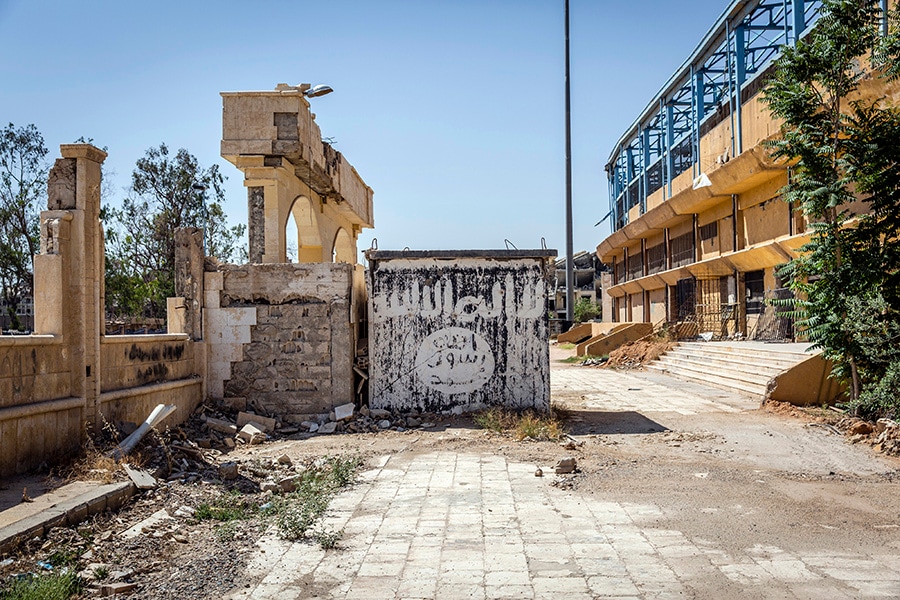
Islamic State has a new head. But we know little about him
The new leader, Abu al-Hasan al-Hashimi al-Qurashi, was unveiled in an audio message released on Islamic State group social media accounts that also confirmed the death of the group's previous leader; however, little is known about the true identity of the leader or his background
 A faded flag of the Islamic State in Raqqa, Syria, June 12, 2018. The Islamic State on Tuesday, March 10, 2022, announced that it has a new leader, but provided little information on the true identity or background of the man who will now oversee the global terrorist organization.
Image: Ivor Prickett/The New York Times
A faded flag of the Islamic State in Raqqa, Syria, June 12, 2018. The Islamic State on Tuesday, March 10, 2022, announced that it has a new leader, but provided little information on the true identity or background of the man who will now oversee the global terrorist organization.
Image: Ivor Prickett/The New York Times
BEIRUT — The Islamic State group announced Thursday that it has a new leader, but provided little information on the true identity or background of the man who will now oversee the global terrorist organization.
The new leader, Abu al-Hasan al-Hashimi al-Qurashi, was unveiled in an audio message released on Islamic State group social media accounts that also confirmed the death of the group’s previous leader, who American officials say blew himself up during a U.S. commando raid on his hideout in northwestern Syria last month.
Al-Qurashi takes the reins of a terrorist group that is a shadow of its former self in terms of members and power, but still causes havoc in poorly governed areas in Syria, Iraq, parts of Africa and elsewhere.
In January, Islamic State group fighters carried out a daring attack on a prison run by a U.S.-backed Kurdish militia in northeastern Syria with the aim of liberating their detained comrades. Hundreds of attackers, prisoners and Kurdish militiamen were killed in more than a week of fighting before the prison was brought back under Kurdish control. It is still unclear how many prisoners managed to escape during the violence.
A few days after the prison battle ended, U.S. commandos carried out a raid on a farmhouse in northwestern Syria, far from the Islamic State group’s traditional redoubt, aimed at killing or capturing the man who then served as the group’s leader, Abu Ibrahim al-Hashimi al-Qurayshi.
©2019 New York Times News Service







